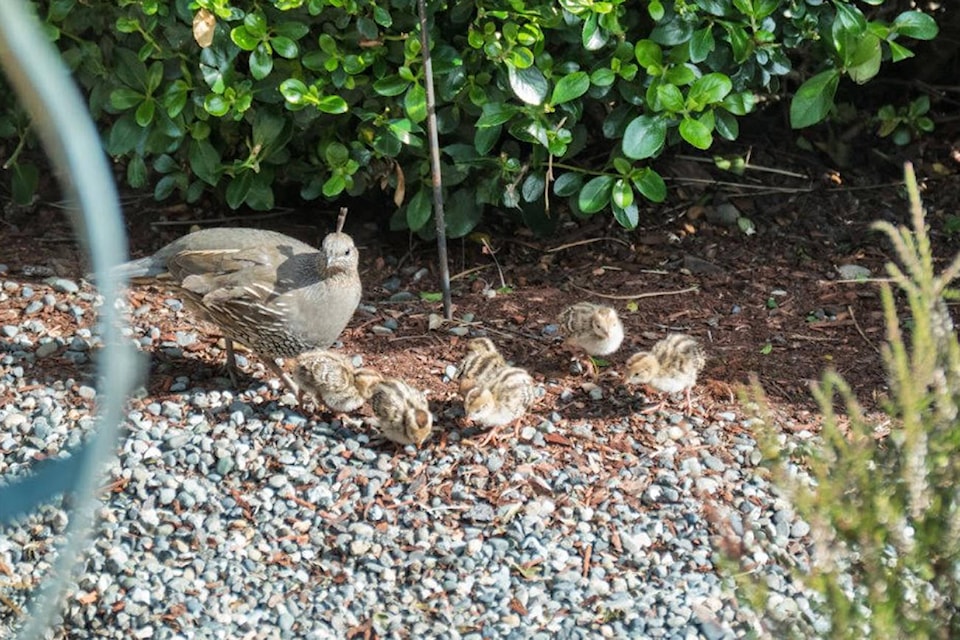The hummingbirds are back. Probably two pair of them, although I’m not quick enough to identify individual features.
They seem to play, like otters, for the sheer joy of living. They perform aerobatics overhead that would make a stunt pilot green with envy. They soar vertically, flip over, dive at dizzying speeds, zoom past at low altitude, do barrel rolls, meet in mid-air, come to an instant stop…
I also notice they have different feeding habits. One visitor perches on the feeder while sipping nectar.
Another hovers constantly while dipping his (or her) beak into the plastic blossom. For each bird, always the same blossom, always the same perch.
And I wonder which bird is headed down an evolutionary dead end.
Because evolution is a one-way street. It moves in only one direction – towards intelligence, from simple to complex, towards greater flexibility and adaptability to the environment.
I can’t think of any examples of evolution moving backwards – although I must admit I sometimes wonder about the California quail that scuttle across the road in front of my car.
Generally speaking, creatures that cannot change and adapt will die out. Or get trapped in an evolutionary cul-de-sac while the rest of the world marches on.
A snap judgment might suggest the perching hummingbird has an advantage. Obviously, hovering requires more energy than perching. If both birds sip the same number of calories, the hovering bird must use up more of those calories before returning to its nest than the perching bird.
Economic calculations, therefore, seem to favour the perching bird.
On the other hand, the habit of staying still while feeding might make the perching hummingbird more vulnerable to predators.
So which hummingbird derives an evolutionary advantage?
Snap judgments are equally unreliable in human behaviour.
Given a choice between having power and being powerless, between strength and vulnerability, few humans would hesitate. We’d choose power.
Being vulnerable, after all, makes you, well, vulnerable.
So let’s compare, say, Jesus Christ and Genghis Khan. Try to set aside the usual moral and religious biases that automatically treat Jesus as the ultimate model for human behaviour.
Which lifestyle has a more lasting influence?
Jesus’ prime human characteristic, it seems to me, was his vulnerability. He had no army. He bore no weapons. He refused even to defend himself against accusations.
And look where it got him – crucified.
In that light, power would seem a preferable option. Even those who profess to follow Jesus – with a few exceptions – rarely seem reluctant to seize power when they have the chance.
But I also notice that people with power seem incapable of letting it go. Of letting themselves be vulnerable. They cannot ask for help, they cannot accept help, because that would be a sign of weakness.
It’s almost as if, by grabbing the brass ring with one hand, they disable the other hand – along with the full range of their emotions.
And perhaps their ability to see any perspective but their own.
Power makes them less able to adapt. Less flexible. Which would seem to put Genghis and his kin at an evolutionary disadvantage, doesn’t it?
History has been far more influenced by the vulnerable one than by a ruthless one.
Jim Taylor lives in Lake Country.
rewrite@shaw.ca
